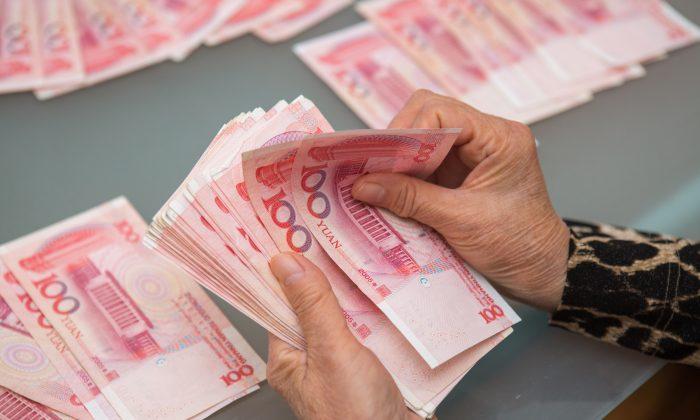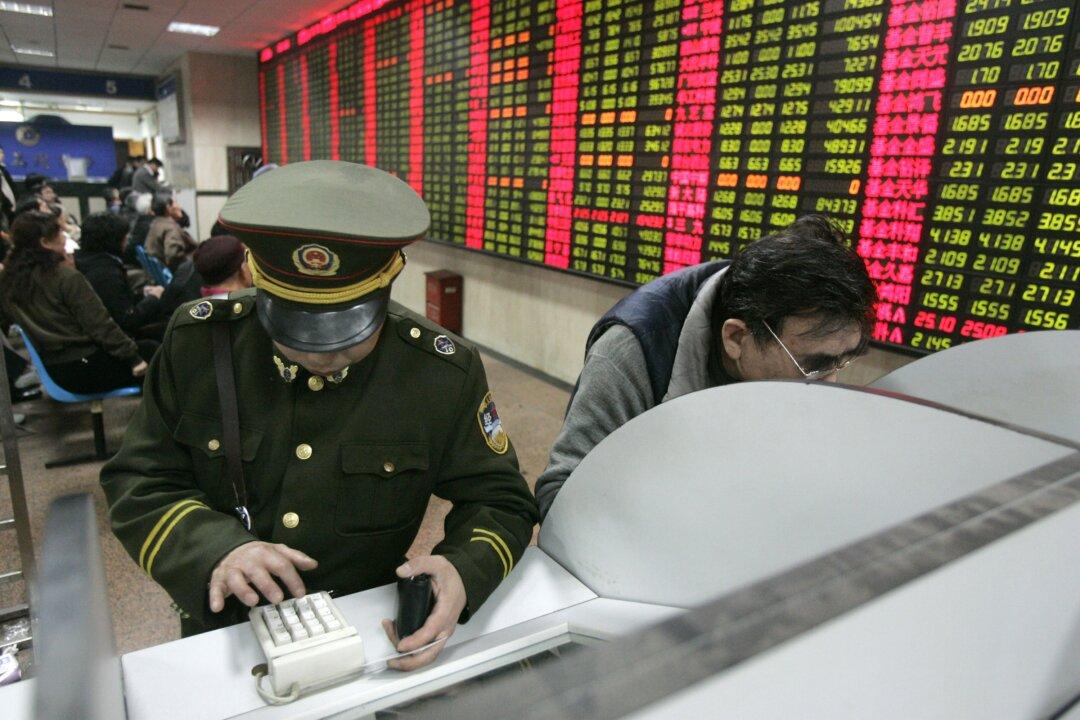China’s Ministry of Finance has thrown its official weight behind the People’s Bank of China (PBOC) practice of buying and selling treasury bonds on the secondary market. The move last month was widely interpreted as signaling a significant shift in China’s monetary policy. It sparked widespread discussion, along with speculation that China is implementing its version of quantitative easing.
Analysts believe that the PBOC’s direct entry into the bond market implies a shift in the yuan’s anchor from the dollar to government bonds, effectively legalizing money printing activities that were previously considered irregular. This could lead to increased yuan issuance, raising concerns about unchecked government debt and the potential for severe inflation.
On April 23, an article from China’s Ministry of Finance stated that it supports “the gradual expansion of trading in government bonds in the central bank’s open market operations to enrich the monetary policy toolkit.”
Quantitative Easing Speculation
The central bank’s direct purchase of government bonds has generated considerable discussion about whether China is embracing quantitive easing, a form of monetary policy in which a central bank buys securities on the open market to push up their prices, reduce long-term interest rates, and increase the money supply.Chinese Communist Party (CCP) state media Xinhua claims that the PBOC’s bond purchases do not constitute quantitive easing or the monetization of fiscal deficits, saying in an April 23 article that the central bank’s bond trading is “completely different” from quantitive easing measures in other countries.
Mr. Sun believes that authorities are reluctant to acknowledge the start of quantitative easing for fear that it would contradict Xi’s statements about enriching the monetary policy toolkit and potentially exacerbate depreciation pressure on the yuan.
As for the main intent behind the CCP’s announcement of the central bank’s entry into government bond trading, U.S. economist Davy Jun Huang told The Epoch Times that the Chinese regime has fallen into a pattern of relying on increasing the base money supply to stimulate economic growth, but at the same falling into a “liquidity trap.”
“From last year to this year, the growth rate of RMB broad money, M2, has remained at around double-digit percentage points, but we haven’t seen significant changes in economic growth,” he noted. “The reason is that much of the funding has not flowed into sectors that truly need it, such as small and micro enterprises, some manufacturing sectors, and private enterprises that are in desperate need of funds.”
Mr. Huang further explained that in response to the 2008 global financial crisis triggered by the U.S. subprime crisis, the CCP stimulated its economy by printing 4 trillion yuan of currency.
Monetary Policies: US Versus China
According to U.S.-based Chinese economist Li Hengqing, China’s issuance of 4 trillion yuan in 2008–09 did indeed bring about a momentary success that made China’s economy stand out at the time, but it also left behind a lot of problems.“Now, the authorities still want to stimulate the economy by increasing currency issuance, following the example of quantitative easing that the United States used to solve the financial crisis. However, compared with the United States, the implementation of quantitative easing in China has major shortcomings,” he said.

Mr. Li pointed out that the implementation of quantitative easing will lead to inflation, which will put great economic pressure on individuals and families living in poverty or with low incomes.
Historically, the Chinese yuan has been anchored in two main ways: through foreign exchange reserves and loans to commercial banks.
From 1994 to 2005, the yuan was pegged to the U.S. dollar, allowing the exchange rate to fluctuate within a defined range.
This system forced companies to convert their foreign currency earnings (such as U.S. dollars) into Chinese yuan, with the PBOC issuing yuan based on those rates.
The 1994 reforms addressed the inflation problems of the 1980s, which led to excessive currency issuance and rampant inflation—reaching 19 percent in 1988 and 24 percent in 1994.
China now uses a “managed float” system, which pegs the yuan against a basket of major currencies including the U.S. dollar.
After joining the World Trade Organization, China’s trade surpluses and rising foreign exchange reserves made the model of currency issuance via foreign exchange reserves the norm. However, as the growth of the U.S. dollar and other foreign currencies slowed in 2014, reliance shifted to issuing loans to commercial banks. This method has recently come under scrutiny, especially with the real estate downturn, prompting a return to anchoring Chinese yuan issuance to government bonds.
The main difference between Chinese yuan issuance and U.S. dollar issuance is regulatory oversight. U.S. Treasury bonds require congressional approval, which acts as a check on government spending. In contrast, China operates without such constraints, leading to concerns about unchecked government spending.
Mr. Huang pointed out the potential risks of a system in which the government can theoretically print money at will, creating a vicious cycle of spending.
Similarly, Mr. Li also highlighted the lack of checks and balances in China, noting that decisions to print large amounts of money could be made without oversight, as evidenced in the past.





